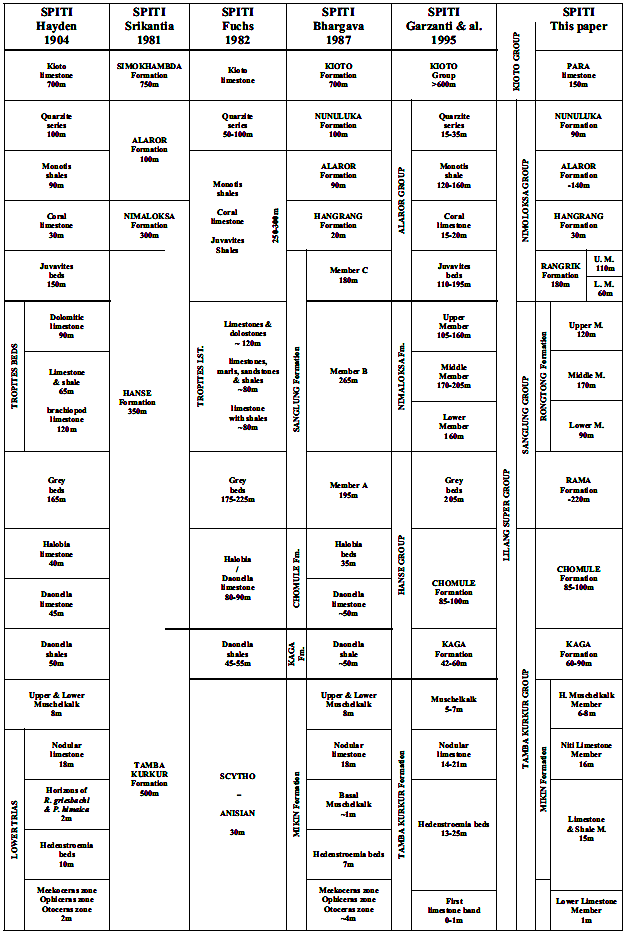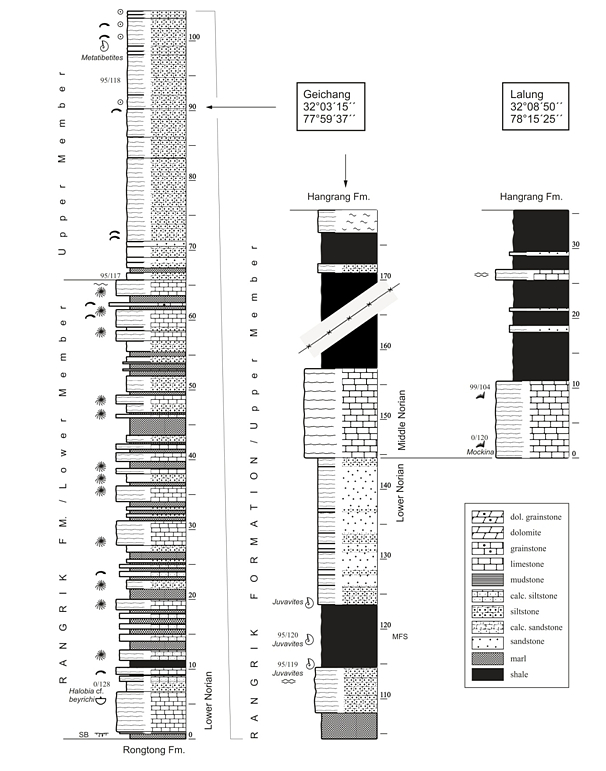Rangrik Fm
Type Locality and Naming
Type section is Near Rangrik. [Original Publication: Bhargava, O.N., Krystyn, L., Balini. M., Lein, R. and Nicora, A. 2004. Revised Litho- and Sequence Stratigraphy of the Spiti Triassic. Albertiana (Supplement), 30: p. 21-38.]
Synonyms: Sanglung C (Bhargava, 1987); lower Nimoloksa Gr.; lower Zozar Fm. It equals the classic Juvavites Beds.
[Figure: Zanskar-Spiti-Kumaun region location (provided by Om Bhargava)]
[Figure 0: History of Triassic lithostratigraphic nomenclature of Spiti (after Bhargava et al., 2004)]
Lithology and Thickness
Limestone to Sandstone. Limestone dominated with little marl, siltstone. Upper part comprises siltstone and in part iron-oolitic sandstone. 160 m (Lower Member 60m; Upper Member 110 m)
[Figure 1: Stratigraphic log of the Rangrik Formation (type section), N of Gechang and E of Lalung, Spiti (after Bhargava et al., 2004)]
Relationships and Distribution
Lower contact
Lower contact with the Rongtong Fm is conformable to sharp.
Upper contact
Gradational contact with the overlying Hangrang Fm is rather sharp.
Regional extent
Zanskar-Spiti and Himachal Pradesh to Kumaun-Garhwal region of Northwest Tethyan Himalaya
GeoJSON
Age
Depositional setting
Low to moderate energy with occasional high energy to even circa-littoral environments (Bhargava, 2008).
Additional Information
It equals the classic Juvavites Beds.


